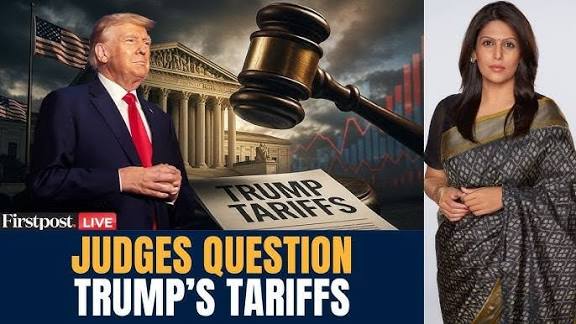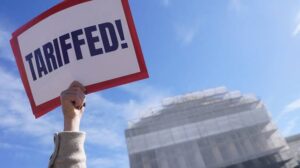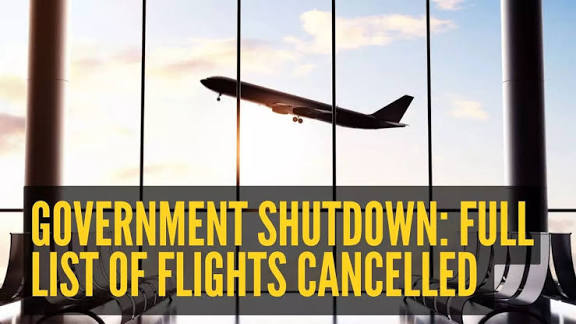Tariffs supreme court: case decision time, polymarket, tariffs prediction, case oral argument

Oral arguments on the tariff case are scheduled to begin at 10 a.m. Today we will discuss about Tariffs supreme court: case decision time, polymarket, tariffs prediction, case oral argument
Tariffs supreme court: case decision time, polymarket, tariffs prediction, case oral argument
The authority of the U.S. President to impose tariffs has long been a matter of constitutional, statutory, and trade-policy debate. Recently, a fast-tracked case before the Supreme Court of the United States (“SCOTUS”) has raised the stakes, testing whether one particular statute—the International Emergency Economic Powers Act (IEEPA) of 1977—can serve as the basis for sweeping tariff impositions. That case touches on issues of separation of powers (Congress vs. executive), trade policy, economic impact, and global supply-chain implications.
In this article, we will walk through the key elements: the statutory and factual background of the case, the timetable (decision time), the oral argument, the role of prediction markets, and a look at likely outcomes and implications for tariffs and trade policy.
Background: Tariff Authority & the Legal Challenge

Statutory Foundation
Under U.S. law, tariffs—customs duties on imports—are traditionally within the realm of Congressional power. Article I of the U.S. Constitution vests in Congress the power to “lay and collect Taxes, Duties, Imposts and Excises.” Congress has enacted many tariff statutes, such as the Trade Act of 1974, Section 232 of the Trade Expansion Act of 1962 (regarding national security), and others.
The current challenge turns on IEEPA, originally enacted in 1977, which gives the President authority, after declaring a national emergency with respect to a threat originating outside the United States, to regulate or prohibit “imports” and other transactions to deal with threats. Crucially, IEEPA does not explicitly mention “tariffs” or “customs duties.”
Facts of the Dispute
The case arose after the administration invoked IEEPA to impose large-scale tariffs on imports from many trading partners, citing national emergencies such as trade deficits, economic coercion, and narcotics trafficking. A panel of small businesses, importers, and states challenged the administration, arguing that the President lacked authority under IEEPA to impose tariffs, and that doing so amounts to an unconstitutional delegation of legislative power.
The United States Court of Appeals for the Federal Circuit held that most of the new tariff measures exceeded the President’s authority under IEEPA. The administration appealed, and SCOTUS granted certiorari and placed the case on a fast-track schedule.
Why It Matters
If the Court upholds the lower-court ruling, many of the tariffs imposed under IEEPA would be invalidated—potentially affecting billions of dollars in trade flows. If the Court instead upholds the President’s authority, it could open the door to broader executive use of tariff tools without further Congressional authorization. It also implicates constitutional doctrines like major questions and non-delegation.
Timing: Case, Oral Argument & Decision Schedule
Expedited Timeline
One of the striking features of this case is how quickly the schedule moved. On cert grant, opening briefs were due within weeks; amicus briefs followed, and oral argument was scheduled for early November. The Court granted extra time for the arguments—80 minutes instead of the typical 60—to accommodate the complexity and importance of the case.
Oral Argument Date
The oral argument itself took place in early November 2025. The justices engaged with the parties over nearly three hours, focusing on statutory interpretation, constitutional limits, and the broader impact of executive tariff authority.
When to Expect the Decision
While the Court sometimes takes 4–6 months after oral argument to issue a decision, the expedited nature here suggests a faster decision may be possible. Analysts expect a ruling in early to mid-2026, though the exact date is uncertain. The high profile and urgency of the matter make a quicker-than-usual decision more likely.
The Oral Argument: Key Highlights
Overview
During the oral argument, the justices focused intensely on two questions: (1) Does IEEPA authorize the President to impose tariffs? (2) If yes, does that authority violate the non-delegation or major questions doctrines by handing legislative power to the President?
Statutory Interpretation Questions
Several justices expressed skepticism about the government’s argument that IEEPA’s broad language includes an unlimited power to impose tariffs. The justices questioned whether a statute granting import regulatory authority could also grant power to levy taxes, traditionally a Congressional domain.
For example:
-
Some justices asked about the line between a licensing regime and a tariff regime, noting that if a tariff is essentially a tax, then that is Congress’s domain.
-
Others voiced concern about reading a broad delegation into IEEPA when Congress had not clearly signaled an intention to allow tariffs under that statute.
Major Questions & Non-Delegation Doctrine
The Court engaged with the “major questions doctrine”—that when a statute raises issues of vast economic and political significance, Congress must speak clearly if it intends to delegate such authority. Some justices questioned whether the President making sweeping economic decisions via tariffs infringes on Congress’s legislative powers, raising non-delegation concerns.
Government’s Defense
The government argued that IEEPA grants broad emergency powers over imports and transactions during a declared national emergency, and that tariffs are one tool among many. They emphasized the need for quick responses to foreign threats and economic coercion.
Key Takeaways
-
The questioning suggests skepticism toward the government’s position, even among justices considered conservative.
-
The Court may craft a narrow remedy rather than a sweeping ruling.
-
Although no prediction is definitive, the tone implies potential limits on executive authority under IEEPA.
Prediction Markets & Tariffs: What’s the Outlook?
Prediction markets offer insight into public sentiment and expectations about the case. Platforms like Polymarket allow participants to speculate on outcomes such as whether tariffs will be upheld or struck down, and when the Court will issue a decision.
Factors Influencing Market Movement
-
Oral argument questioning: Strong skepticism may lead markets to favor striking down tariffs.
-
Historical precedent: Courts have traditionally emphasized Congressional control over major economic decisions.
-
Expedited schedule: Urgency may impact perceived likelihoods.
-
Economic stakes: Tariffs affect supply chains, trade partners, and prices, adding market volatility.
Markets reflect collective expectation: if traders believe the Court will rule against tariffs, pricing will shift toward that outcome, and vice versa.
Implications & Scenarios: What Happens Next?
Scenario A: Court Strikes Down the Tariffs
If the Court rules that IEEPA does not authorize tariffs or that delegation is unconstitutional:
-
Many IEEPA-imposed tariffs would be invalidated.
-
Congress may need to legislate new authority or set clearer constraints.
-
The decision would reaffirm Congressional control over major economic policies.
-
Businesses may adjust supply chains and seek refunds where appropriate.
-
Politically, the ruling would serve as a check on executive power.
Scenario B: Court Upholds the Tariffs
If the Court finds IEEPA authorizes tariffs:
-
The administration retains significant tariff authority.
-
Businesses must plan for continued duties.
-
Major questions and non-delegation doctrines may be weakened in practice.
-
Trade negotiations could become more complex, as foreign partners respond to U.S. actions.
Timeline & Decision Risks
Given the expedited schedule, a decision may come in early to mid-2026. Tariffs remain in place during the interim. Businesses and policymakers must prepare for either outcome to minimize disruption.
Recommendations for Businesses, Importers, and Policymakers
Businesses / Importers
-
Review contracts, supply chains, and procurement strategies for potential tariff changes.
-
Monitor developments closely, as a ruling against tariffs could create refund or reclassification issues, while a ruling upholding tariffs means continued compliance.
-
Differentiate between IEEPA-based tariffs and other tariffs (like Section 232 or 301) to avoid confusion.
Policymakers & Trade-Law Practitioners
-
Prepare legislative or policy responses if the Court limits executive tariff authority.
-
Consider alternative trade strategies if reliance on executive tariff power is reduced.
-
Government agencies should plan for multiple scenarios and anticipate how the Court frames emergency powers.
Conclusion
This Supreme Court case represents one of the most consequential trade and constitutional law disputes in recent years. At its core, it addresses whether the President can, using IEEPA, impose sweeping tariffs—an area traditionally reserved for Congress. The expedited schedule, extensive oral arguments, and attention from prediction markets underscore the stakes.
Regardless of the outcome, the decision will reshape U.S. trade policy, the balance of power between Congress and the executive, and global supply chain strategies. Businesses, policymakers, and legal practitioners should prepare for both potential rulings and closely monitor developments as the decision, expected in early to mid-2026, approaches.
How useful was this post?
Click on a star to rate it!
Average rating 0 / 5. Vote count: 0
No votes so far! Be the first to rate this post.
About the Author
usa5911.com
Administrator
Hi, I’m Gurdeep Singh, a professional content writer from India with over 3 years of experience in the field. I specialize in covering U.S. politics, delivering timely and engaging content tailored specifically for an American audience. Along with my dedicated team, we track and report on all the latest political trends, news, and in-depth analysis shaping the United States today. Our goal is to provide clear, factual, and compelling content that keeps readers informed and engaged with the ever-changing political landscape.




